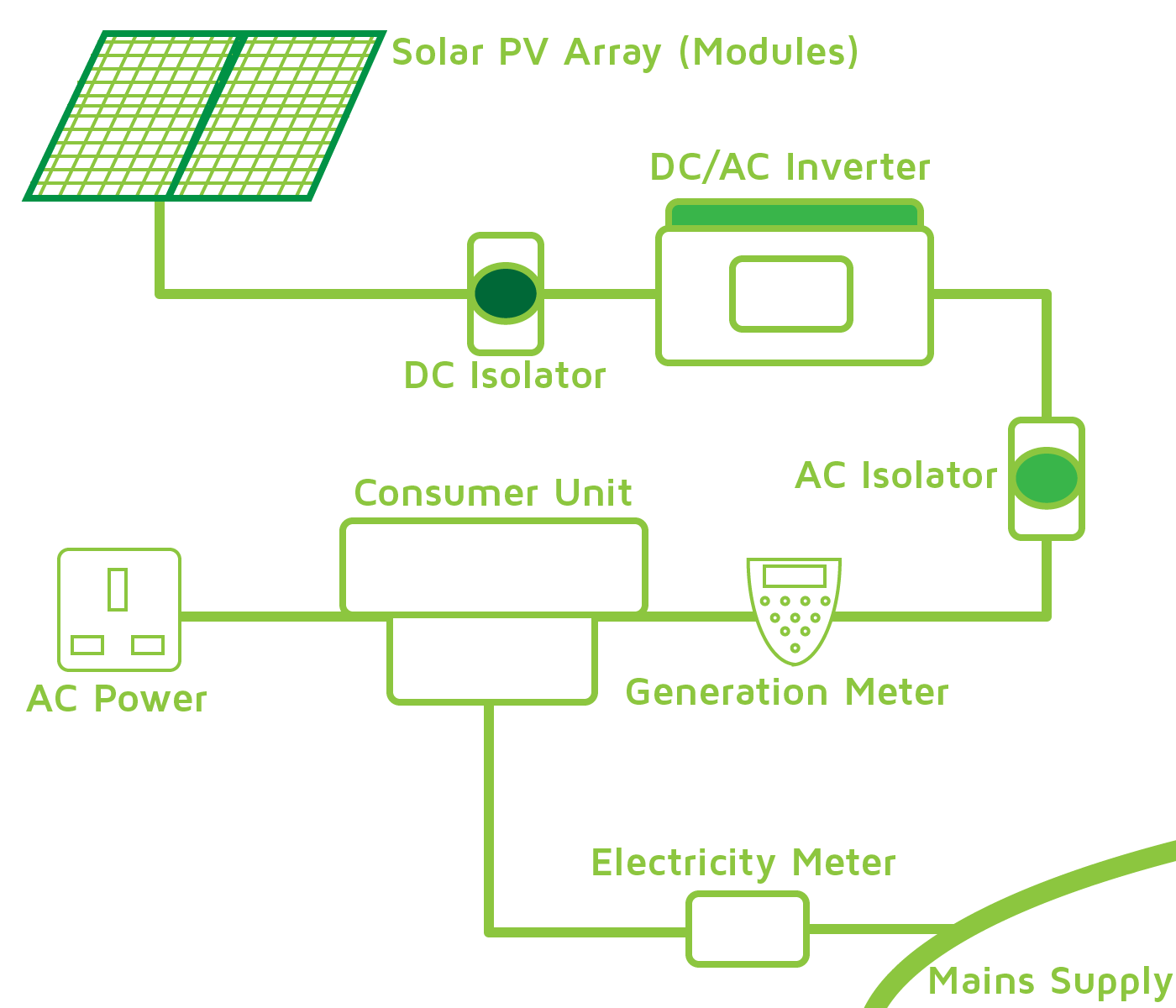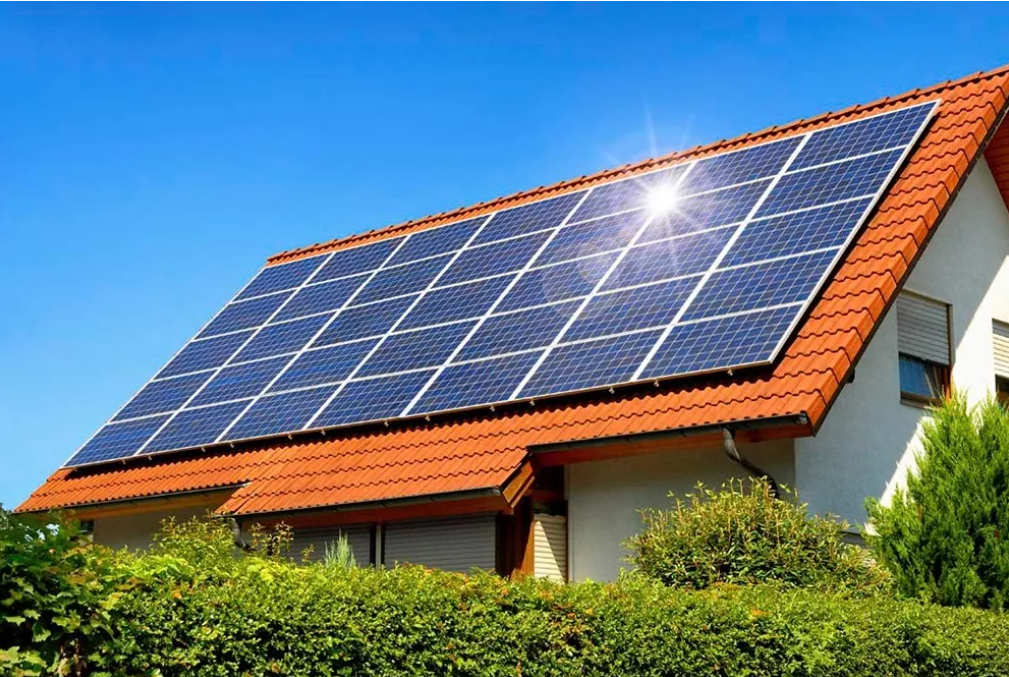Generating electricity using solar electric panels and associated equipment
How Solar PV Panels Generate Electricity
Solar photovoltaic (PV) panels use cells containing a semi-conductor material to capture the sun’s energy and convert solar radiation into electricity. The most commonly used semi-conductor material is silicon, which is an abundant natural resource found in sand. When light strikes the cell a certain amount of energy is absorbed within the semiconductor material, knocking electrons, the negatively charged particles that form the basis of electricity, loose.
Most PV cells have two layers of semi-conductor material, one positively charged and one negatively charged. When light shines on the semi-conductor the electric field across the junction between these two layers causes electricity to flow, generating direct current (DC). By placing metal contacts on the top and bottom of the PV cell, we can draw that current off for external use.
Solar PV electric panels do not require bright sunlight in order to operate, meaning that you can still generate electricity on cloudy days, however in general the greater the intensity of light the higher the flow of electricity. Although, due to the reflection of sunlight, days with slight cloud can result in higher energy yields than days with a completely cloudless sky.
It is important to realise that you can only use your free solar electricity when it is being generated – so unless you also invest in batteries to store power for use in the evenings and at night, you will need to pay for your energy use as normal when the panels are not producing electric.

How the Electricity is Converted for use
Direct Current (DC) needs to be converted into alternating current (AC) so it can be used in a domestic building; this is performed by an inverter. The AC electricity then passes via the generation meter, which measures how much electricity has been created, and on to the consumer unit where it can be fed into the property for use or exported back to the national grid via the electricity meter.
A typical grid connected roof mounted system consists of a number of components, as shown in the diagram to the right.
You will be paid for every kWh of electricity that your solar PV system generates, even if you use the power yourself. You will also be paid an additional amount for any electricity that you export to the national grid. Click here to visit the feed in tariff page to find out more.
Via EWS
We will happily answer any of your questions regarding our PV services. Simply leave us your contact details below and a member of our team will get in touch with you.



